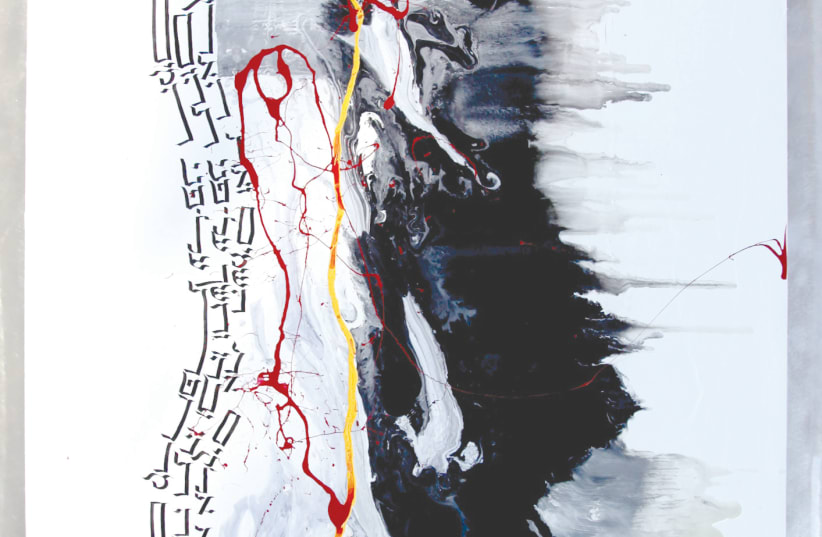It is always a pleasure to visit Safed, and fortunately there is an event that happens every Friday for the next few months showcasing art, a bit of spiritually, in-tune music and a taste of some wine.
Art in Safed is often not considered part of the Israeli mainstream, and perhaps for good reason, but there are always some gems among its clearly “little India” feel.
In this respect, the work of Igal Fedida at the General Exhibition of Safed may inspire and evoke strong emotions and ideas.
Fedida is a largely self-taught artist, a businessman who sold his shop and defected, as it were to art. Israeli-born, he moved to the United States and now has his own gallery in Fort Lauderdale, Florida.
In conversations and certainly in his paintings and sculptural objects, it became clear that his interest is primarily in the concept of creation, the liminal point between nothingness and being. While physicists and cosmologists research the origins of the universe and that first hint of creative life within the immensely eventful first second, so the artist tries to give visual form and texture to that of which the first stirrings of life consist.
The artist is able to achieve this through a carefully considered knowledge of materials – mainly construction materials such as metal, copper, glass and wood – and then merges that with a free gestural mark-making or simple allowing of the industrial enamels to flow, to drip, to shine and to fuse with surrounding elements.
There is a sense in his paintings of both wild abandon – the spark of creation – as well as a sensitivity to the qualities of paint, color and line. The effect is often dazzling, the kind of visual analogy to the tremendous energy in those first moments. There is a sense that time itself, a most mysterious creation, is given expression through the nuanced texture of his paintings.
Moreover, Fedida is able to conjure a sense of the void, that immense potential for being perhaps akin to what physicists describe as the black hole or the tempestuous singularity before light emerges.
What is most astonishing is that this is accomplished without simply narrating the story of the unfolding of the observable universe, but with the actual materials he uses tell the story. And just to make the impact and message that much stronger, the artist often incorporates a neat calligraphic script in either Hebrew or English and uses both the biblical text as well as lines of inspiration from the likes of Leonard Cohen and Israeli poet Erez Bitton.
This perhaps makes the largely abstract work a little easier to digest, but even so, as we discussed, the pure color harmony and dynamism are such that he uses color symbolically. Red, for example, is a display of restraint and boundary; blue is more free-flowing; black is the abyss – a sort of “color wheel” that Kandinsky himself may have approved of when he wrote early in the last century, his important work, namely, Concerning the Spiritual in Art.
Essentially, the artist wishes to capture the source of light, namely the “endless,” for this is the stuff of matter and of higher consciousness – the human being.
The very laws of physics make a universe possible, but how in fact did such laws evolve? Was it all caprice? The argument of the philosophers that with enough time, a universe can come to be is highly unlikely given the precise parameters, such as the rule of gravity that must obtain if things can be.
Fedida is inspired by such mysteries and while it is noble to contemplate such things, it is admirable indeed to find visual and plastic form for such speculation and wonder.
